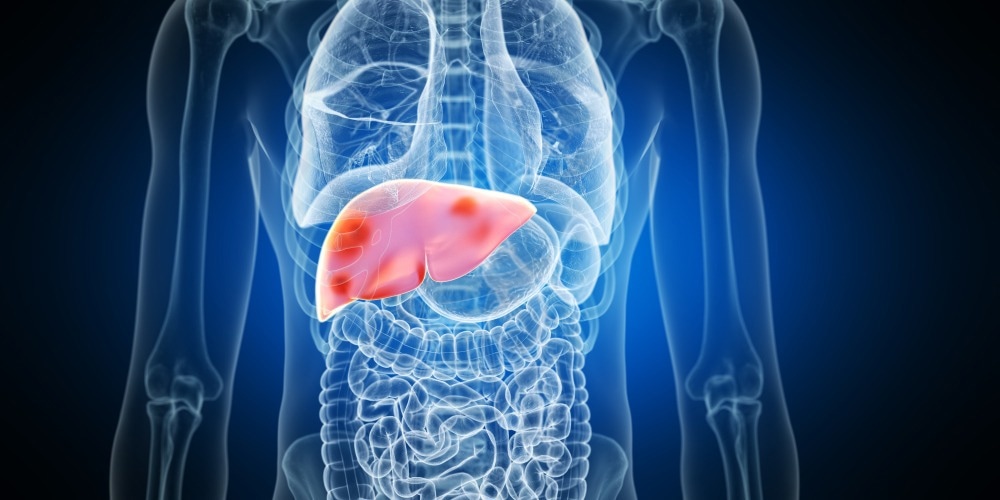Undetected diabetes in hemochromatosis patients is linked to higher mortality, highlighting the need for early detection and treatment.
 Study: Mortality and risk of diabetes, liver disease, and heart disease in individuals with haemochromatosis HFE C282Y homozygosity and normal concentrations of iron, transferrin saturation, or ferritin: prospective cohort study. Image Credit: Sebastian Kaulitzki/Shutterstock.com
Study: Mortality and risk of diabetes, liver disease, and heart disease in individuals with haemochromatosis HFE C282Y homozygosity and normal concentrations of iron, transferrin saturation, or ferritin: prospective cohort study. Image Credit: Sebastian Kaulitzki/Shutterstock.com
A recent study conducted by researchers from Denmark and published in BMJ investigated the risk of diabetes, heart disease, and liver disease in individuals homozygous for the HFE C282Y mutation, which is associated with hereditary hemochromatosis, even when iron levels appear normal. The study also explored whether the mutation modified the mortality risk in individuals with heart, liver, or diabetes disease.
Background
Iron regulation in the body is primarily controlled by the hormone hepcidin, which interacts with the human homeostatic iron regulator or HFE protein to maintain iron balance. Mutations in the HFE gene, such as the C282Y variant, disrupt this balance, leading to hereditary hemochromatosis, a condition characterized by excessive iron absorption and storage.
While most cases in Europe involve individuals who are homozygous for this mutation, the clinical manifestations vary widely, with only a fraction of the individuals developing severe complications such as liver disease or diabetes. Clinical guidelines typically focus on identifying at-risk individuals through elevated iron markers such as transferrin saturation and ferritin. However, many remain undiagnosed under these criteria.
Although phlebotomy and other therapies help manage symptoms in diagnosed cases, there is limited data on the risks associated with the disease for individuals who have the mutation but also have normal iron markers. Additionally, the relationship between these risks and increased mortality also remains unclear, highlighting the need for a better understanding of this genetic condition in broader populations.
The current study
The present study analyzed data from three large Danish cohorts comprising over 130,000 individuals to examine the health risks associated with the HFE C282Y homozygosity mutation. The participants were genotyped for HFE mutations (C282Y and H63D) and followed for up to 27 years.
The researchers obtained information on health and mortality outcomes, including diabetes, heart disease, and liver disease, through the national hospital and death registries of Denmark. Additionally, baseline health data, including blood levels of iron, ferritin, and transferrin saturation, were collected at enrollment, and adjustments were made for age and sex.
The study assessed the relative and absolute risks of heart and liver disease, as well as diabetes, through statistical models, comparing homozygous individuals to non-carriers. Additionally, stratified analyses were used to examine outcomes in subgroups with normal versus elevated iron markers.
The researchers also evaluated the mortality risk associated with diseases among homozygotes and calculated the population-level impacts, such as attributable mortality fractions. Furthermore, the participants were not informed of their genetic status to avoid bias.
Key findings
The study found that individuals who were homozygous for the HFE C282Y mutation were at a significantly higher risk of diabetes and liver disease, even with normal iron levels. Still, the risk of heart disease was not significant. Notably, the individuals who were C282Y homozygotes showed a 1.72-fold increased risk of diabetes, while the risk of liver disease was 2.22-fold higher than that of individuals who were not carriers of that mutation.
Furthermore, subgroup analyses revealed that even in individuals with normal transferrin saturation or ferritin levels, the increased risks of diabetes and liver disease persisted, with the highest risk of diabetes observed in individuals with both markers indicating normal levels (6.49-fold increase). In contrast, the risk of heart disease was not elevated in this group.
Additionally, the mortality analyses demonstrated that individuals who were homozygous for the C282Y mutation and had diabetes faced nearly double the risk of death compared to non-carriers with diabetes. Overall, 27.3% of deaths among homozygotes were attributed to diabetes, emphasizing the significant impact of this condition. Moreover, mortality rates were also elevated among the C282Y homozygotes with liver disease but not with heart disease. These findings also highlighted the gaps in current clinical guidelines, which focus primarily on elevated iron markers.
Conclusions
To summarize, the study reported that individuals who were homozygous for the C282Y mutation in the HFE genes had a higher risk of diabetes and liver disease, even if their iron levels were normal. Furthermore, the mutation was found to significantly increase the mortality risk among individuals with diabetes, emphasizing the need for broader diagnostic criteria and targeted management.
These results challenged the current guidelines, which only monitor the iron levels, and emphasized the need to prioritize genetic testing and proactive care for at-risk populations to prevent disease complications and improve survival outcomes.
Journal reference:
- Mottelson, M., Helby, J., Nordestgaard, Børge Grønne, Ellervik, C., Mandrup-Poulsen, T., Petersen, J., Bojesen, Stig Egil, & Glenthøj, A. (2024). Mortality and risk of diabetes, liver disease, and heart disease in individuals with haemochromatosis HFE C282Y homozygosity and normal concentrations of iron, transferrin saturation, or ferritin: prospective cohort study. BMJ, 387, e079147. DOI:10.1136/bmj2023079147,
https://www.bmj.com/content/387/bmj-2023-079147